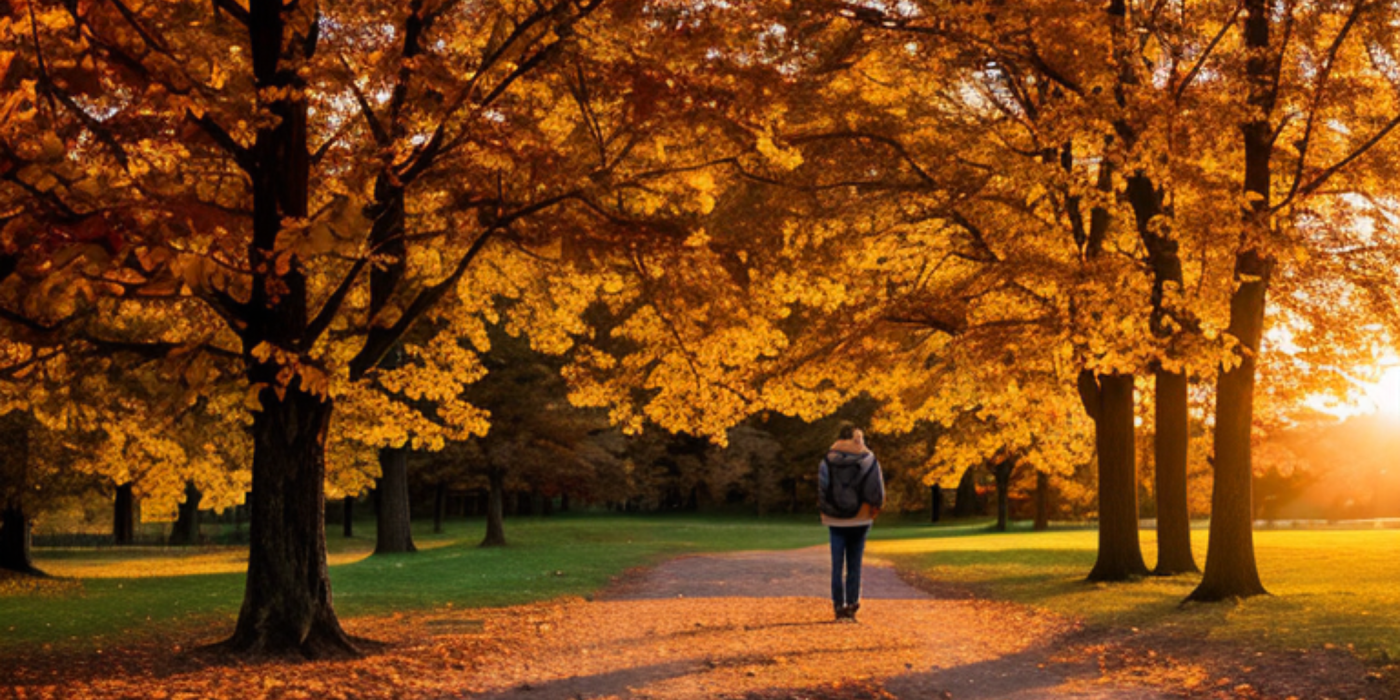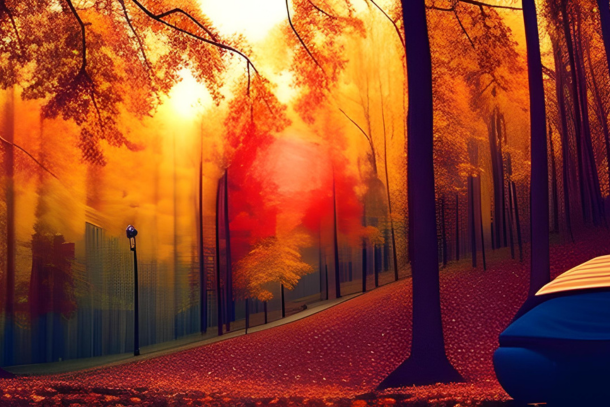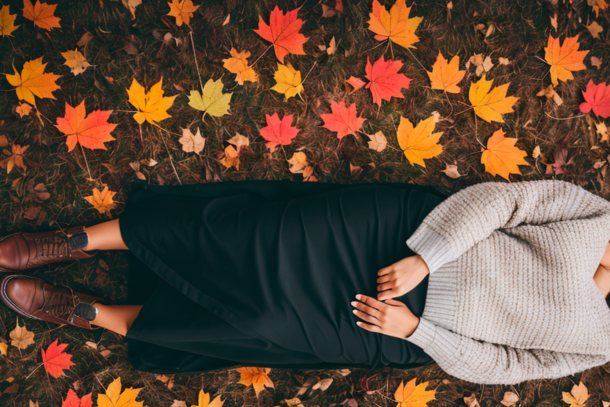The Sleep-Wake Cycle: How Light and Darkness Affect Our Circadian Rhythm

The intricate dance between our body's natural rhythms and the world outside plays a pivotal role in shaping our daily lives. Central to this is the concept of the circadian rhythm, a term that may sound complex but is fundamentally rooted in the ebb and flow of our daily activities, energies, and rest.
What is the Circadian Rhythm?
Derived from the Latin words "circa" (around) and "diem" (day), the circadian rhythm refers to the physical, mental, and behavioural changes that occur in a roughly 24-hour cycle. It's our body's internal clock, guiding us through periods of wakefulness and rest, hunger and satiety, focus and relaxation. Governed primarily by the suprachiasmatic nucleus (SCN) in the brain, this rhythm responds most notably to the light and dark cues in our environment.
The Paramountcy of the Sleep-Wake Cycle
The sleep-wake cycle, a cornerstone of the circadian rhythm, plays an instrumental role in our overall health and well-being. A well-regulated sleep-wake cycle ensures we get restorative sleep, bolsters our immune system, sharpens our cognitive functions, and even regulates our mood. Disruptions to this cycle, often resulting from modern life's demands and our ever-present screens, can have profound implications, ranging from chronic fatigue to mood disorders.
In the forthcoming sections, we'll delve deeper into the symbiotic relationship between light, darkness, and our sleep patterns, offering insights to harmonise with these natural rhythms for a life of balance and vitality.
Understanding the Circadian Rhythm
In the symphony of life, our bodies dance to the rhythm of an internal clock known as the circadian rhythm. This intricate timekeeping system orchestrates our sleep-wake cycles and affects various physiological processes.
The Internal Timekeeper: Definition and Overview
The circadian rhythm is our body's natural, internal clock that governs the ebb and flow of our daily biological functions. It regulates not only our sleep and wakefulness but also body temperature, hormone production, and even cognitive performance. This rhythmic orchestration is essential for maintaining overall health and well-being.
The Sleep-Wake Cycle Unveiled
Embedded within the circadian rhythm is the sleep-wake cycle, a fundamental pattern that dictates when we naturally feel drowsy and when we are most alert. This cycle is governed by a delicate interplay of biological processes that respond to cues from the external environment, particularly light and darkness.
The Role of the Suprachiasmatic Nucleus (SCN)
At the heart of our circadian rhythm lies a cluster of cells in the brain known as the suprachiasmatic nucleus (SCN). This tiny region, located in the hypothalamus, acts as the conductor of our internal orchestra. It receives signals from our eyes, primarily in response to light, and uses this information to synchronise our body's functions with the external world. As morning light filters through our retinas, the SCN orchestrates the release of hormones like cortisol, signalling wakefulness and alertness. Similarly, as darkness falls, it triggers the production of melatonin, the hormone that signals the body to prepare for sleep.
In essence, the circadian rhythm is a finely tuned mechanism that intertwines our existence with the rising and setting of the sun. It's a symphony of biology and external cues, choreographed by the SCN, that keeps our body and mind attuned to the cyclical dance of light and darkness.
The Influence of Light
The interplay between light and our circadian rhythm is a dance that shapes our daily lives in profound ways. Whether it's the invigorating embrace of morning sunshine or the soothing glow of artificial lighting, light holds the power to orchestrate our body's internal symphony.
Natural Light
a. Sunlight and Melatonin Regulation As the sun rises, its rays cascade over our retinas, triggering a cascade of biological reactions. One of the key players in this ensemble is melatonin, the hormone that regulates our sleep-wake cycle. Morning sunlight acts as a conductor, signalling the body to suppress melatonin production, kickstarting alertness and mental acuity.
b. Morning Sunlight's Impact on Alertness Basking in the warmth of morning sunlight does more than just rouse us from slumber; it fosters a sense of vitality and sets a positive tone for the day. The exposure to natural light encourages the production of serotonin, the neurotransmitter associated with mood elevation and a feeling of well-being.
c. The Role of Blue Light Amidst the spectrum of light, blue light emerges as a pivotal player in our daily rhythm. It penetrates the retinal cells, conveying the message that it's time to be awake and attentive. Blue light exposure during the day bolsters cognitive function and aligns our internal clocks, ensuring a harmonious dance between our bodies and the world around us.
Artificial Light
a. Blue Light's Digital Intrusion In the era of screens and digital devices, the influx of artificial blue light has rewritten the rules of our evenings. The glow emitted by screens, be it from smartphones, tablets, or laptops, suppresses melatonin production. This intrusion not only impairs the transition into restfulness but also alters the quality of sleep, leaving us less rested upon waking.
b. Disrupting the Sleep Phase Beyond the screens, artificial lighting itself holds the potential to sway our natural sleep-wake cycle. As the sun dips below the horizon, artificial lighting's exposure can lead to a delay in the sleep phase. The prolonged exposure to bright lights tricks the body into believing it's still daytime, hampering the onset of sleepiness.
c. Nurturing Sleep-Ready Surroundings To counteract the adverse effects of artificial light, it's wise to cultivate an environment that supports the transition into slumber. Dimming the lights as bedtime approaches, replacing bright bulbs with warmer, softer ones, and engaging in calming pre-sleep routines can pave the way for a more restful night's sleep.
In the symphony of light and darkness, understanding the nuanced ways in which they sway our internal rhythms empowers us to synchronise our biological clocks for enhanced vitality and well-being.
The Power of Darkness
In the quiet embrace of darkness, our bodies respond to the diminishing light, signalling the arrival of night. This natural transition triggers a cascade of processes within us, driven by our circadian rhythm. As the world around us dims, our biological clock acknowledges the change, leading to an increase in the production of melatonin—the sleep hormone. This surge in melatonin secretion occurs in response to darkness, preparing us for restful slumber.
Embracing the Depths of Sleep
Darkness is more than just the absence of light; it holds a profound influence on the quality of our sleep. As we journey through the night, the link between darkness and the deep stages of sleep becomes evident. These stages, known as slow-wave sleep or deep sleep, are essential for physical restoration and mental rejuvenation. The cover of darkness not only encourages our transition into these vital stages but also contributes to the overall restorative nature of our sleep.
The Effects of Light Pollution
As urban environments continue to evolve with constant artificial light, the boundary between day and night can blur, wreaking havoc on our natural sleep-wake patterns. Light pollution from streetlights, screens, and other sources disrupts the delicate balance our circadian rhythm relies upon. The excessive exposure to light during nighttime hours confuses our internal clock, leading to difficulties falling asleep and achieving deep, uninterrupted slumber.
Nurturing a Dark Sleep Haven
Recognising the implications of light pollution, it becomes evident that crafting a conducive sleeping environment is crucial. One effective strategy is investing in blackout curtains that shield your sleep space from intrusive artificial light. By eliminating unnecessary sources of illumination, you create a cocoon of darkness that encourages the natural production of melatonin and fosters a restful sleep environment.
In conclusion, understanding the symbiotic relationship between darkness and our circadian rhythm empowers us to harness the power of night for restorative sleep. As the world around us quietens, let us embrace the enveloping darkness as a friend, guiding us towards a night of deep slumber and rejuvenation.
Chronotypes: Are You an Early Bird or Night Owl?
In the grand symphony of our sleep-wake cycle, individual variations create unique melodies that dictate our sleep patterns. These variations are referred to as "chronotypes." They define whether we are naturally inclined to be early birds, rising with the sun, or night owls, thriving during the moonlit hours.
Embracing Our Sleep Rhythms
Understanding our chronotype is akin to deciphering the code of our inner clock. Early birds, or "morning people," experience peak alertness and energy in the early hours, gradually winding down as the sun sets. Night owls, on the other hand, find their creativity and productivity come alive as the world turns quiet. This individual predisposition isn't just about preference; it’s rooted in genetics, influenced by age, and shaped by lifestyle.
The Dance of Light and Darkness with Chronotypes
Our chronotype isn't a solitary dancer on the stage of the sleep-wake cycle. It's an integral part of the duet between light and darkness. Early birds naturally embrace the rising sun, which acts as an invigorating cue for their circadian rhythm. Night owls, meanwhile, thrive in the dimming evening light, finding their energy surge when the rest of the world unwinds.
Balancing with Modern Lifestyles
The challenge often arises when our chronotypes collide with societal demands. Early birds might find themselves battling against late-night commitments, while night owls might struggle with early morning obligations. Understanding our chronotype equips us with the wisdom to find a harmonious balance. Whether it's adjusting daily schedules or optimising our sleep environment, acknowledging our inherent sleep tendencies empowers us to honour our natural rhythm while navigating the demands of modern life.
In essence, our chronotype is a personalised imprint in the mosaic of our sleep-wake cycle, influenced by the interplay of our inner clock with the external cues of light and darkness. It's an invitation to align with our natural inclinations and optimise our well-being through tailored sleep routines.
Practical Tips to Harness the Power of Light and Darkness
Creating an environment that nurtures our natural sleep-wake rhythm involves a harmonious interplay between light and darkness. By being mindful of these cues, we can significantly improve the quality of our sleep and overall well-being.
Dim the Lights and Embrace Warm-Coloured Bulbs
As evening approaches, opt for softer lighting by dimming overhead lights and using warm-coloured bulbs. These warm hues mimic the natural progression of sunlight as it fades into dusk. This gentle transition signals to your body that it's time to wind down, promoting the release of melatonin, the sleep-inducing hormone.
Harness the Healing Power of Natural Light
Expose yourself to ample natural light during the day, especially in the morning. Sunlight is a powerful regulator of the circadian rhythm. It not only boosts mood and alertness but also helps recalibrate your body's internal clock. Step outside for a walk, open curtains wide, and let the daylight flood your living spaces.
The Benefits of "Digital Sunsets"
In the modern digital age, "digital sunsets" are an essential practice for protecting your sleep. As the evening progresses, gradually reduce exposure to screens emitting blue light, such as smartphones, tablets, and computers. Blue light interferes with melatonin production, disrupting your sleep-wake cycle. Set a designated time before bed to unplug and unwind, allowing your body to prepare for rest.
Reduce Screen Time Before Bed
Studies have shown that screen time close to bedtime can hinder the onset of sleep. The blue light emitted by screens suppresses melatonin, making it harder to fall asleep. Swap digital devices for calming activities like reading a physical book, practicing gentle stretches, or engaging in relaxation techniques.
Incorporating these practical tips into your daily routine can make a significant difference in how well you sleep and how refreshed you feel upon waking. By honouring the delicate balance between light and darkness, you empower your body to follow its natural sleep-wake rhythm, allowing for nights of restorative slumber.
Note: Be mindful of British Summer Time (BST) adjustments in natural light exposure and bedtime routines.
Conclusion
In the intricate ballet of our daily lives, the dance between light and darkness holds profound significance. The circadian rhythm, our body's internal conductor, orchestrates this symphony, playing a pivotal role in our overall well-being. As we journey through the realms of light and then into the arms of darkness each day, our biological clock adjusts, influencing not only our sleep but also our mood, cognitive function, and metabolic processes.
A Symphony of Synchronicity
Aligning with our natural circadian rhythms isn't just a preference; it's a necessity for optimal health. When we honour the cues of light and darkness that nature provides, we create a harmonious rhythm that resonates with the core of our being. It's a rhythm that has evolved over millennia, shaped by the rising and setting of the sun.
Nurturing Our Inner Conductor
The magic of the circadian rhythm lies in its ability to synchronise our body with the world around us. By respecting the ebb and flow of light and darkness, we bolster our sleep quality, elevate our mood, and enhance our overall vitality. This intrinsic relationship between external light, internal clocks, and our well-being is a testament to the intimate connection we share with our environment.
In the gentle embrace of twilight, as stars appear and the world quiets, we find a call to mindfulness. Let us heed the whispers of light and the embrace of darkness, allowing them to guide us toward restful nights and vibrant days. As you retire each evening, may you remember that in the gentle cadence of the sleep-wake cycle, we find a symphony that resonates with our essence.
Related to this article are the following:
I do hope you have enjoyed this article and hope that you will subscribe to my newsletter so you can get the latest information about all things naturally relaxing.
Stay in touch, join the Naturally Relaxing Newsletter
Newsletter Signup
Post Your Comments
or post as a guest
Be the first to comment.
Latest articles in Sleep

The Power of Waterfall Sounds for Enhanced Sleep Quality

Embracing Autumn: Sleep Routines for the British Season

Autumnal Slumber: Understanding Our Seasonal Sleep Patterns

Crafting the Ideal Autumnal Sleep Sanctuary

Savouring Autumn: Foods to Enhance Your Sleep






